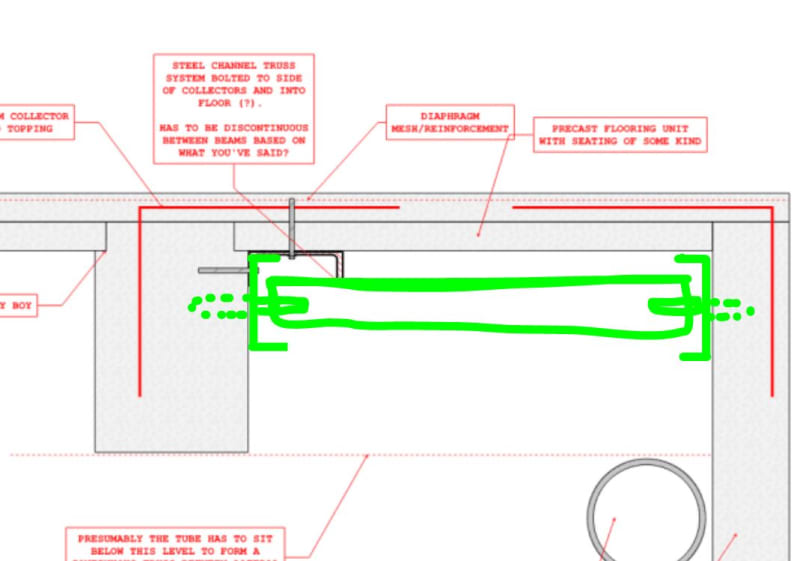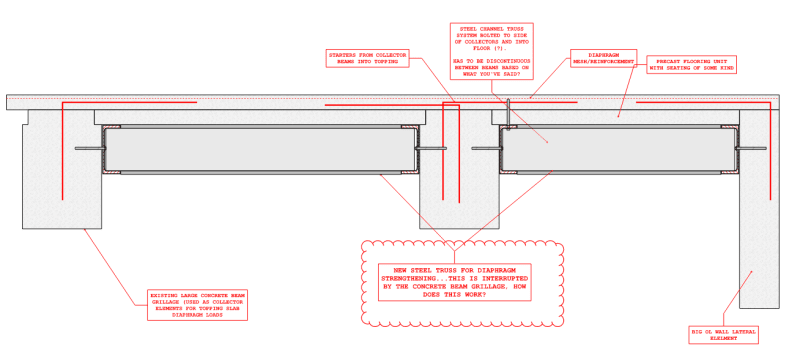Backcheckrage
Structural
- Sep 23, 2012
- 84
Hello fellow nerds,
I am exploring the idea of stitching together precast floor panels so I can unilise the entire depth of the floor (75topping+75unispan).
Is this a hair brained idea?
The top of unispan is indeed roughened so I believe it will act with the topping (just not at the abutting panel joint, hence why proposed steel plates).
Has this been done before? I cant find any photos or literature on the google.
I am exploring the idea of stitching together precast floor panels so I can unilise the entire depth of the floor (75topping+75unispan).
Is this a hair brained idea?
The top of unispan is indeed roughened so I believe it will act with the topping (just not at the abutting panel joint, hence why proposed steel plates).
Has this been done before? I cant find any photos or literature on the google.



